Church of Saint-Vincent, Fontanges
Fontanges, FR
The church is one of the very few Gothic buildings in the Haute-Auvergne and preserves a Romanesque bell tower.
Here you can search for a building to visit. You can use the map find destinations, or you can use the filters to search for a building based upon what different criteria.
Fontanges, FR
The church is one of the very few Gothic buildings in the Haute-Auvergne and preserves a Romanesque bell tower.

Mérignac, FR
Benefiting from an important place, because in the centre of Mérignac, the church offers a beautiful example of syncretism between the Romanesque and neo-Gothic styles. Of modest size, its charm lies above all in its architecture of local light-coloured stone, but also in its stained glass windows, which make it an illuminated place with a pleasant atmosphere.
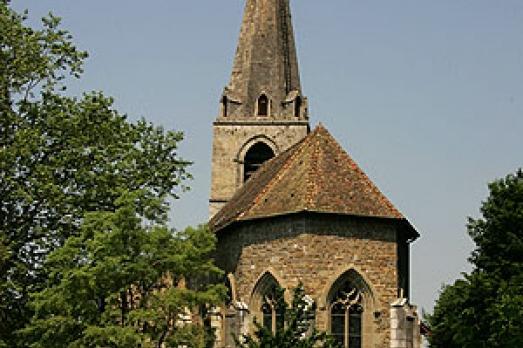
Montreux, CH
The church of Saint-Vincent was probably built in the 15th century on a former sacred building. The new church was consecrated in 1524 to Saint Vincent, the patron saint of winegrowers. Shortly afterwards, when the Bernese arrived (1536), the church became a Protestant temple, which it still is today. The modern stained glass windows are signed by the artist Jean Prahin.
Barrès, FR
From the ecclesiastical point of view, the village is a foundation (before the 10th century) of the church of Viviers on the former Gallo-Roman estate. Saint-Vincent was the seat of a barony with jurisdiction over the surrounding parishes. In 1020 (?) the canons of Viviers exchanged with the monks of Cluny, the church of Saint-Vincent-de-Barrès for that of Meysse.
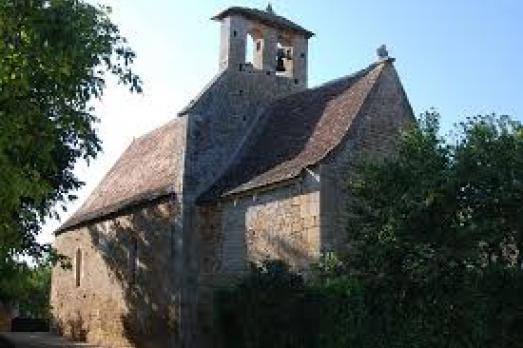
Saint-Vincent-de-Cosse, FR
The Church of Saint-Vincent, registered with the Historical Monuments, is located in Saint-Vincent-de-Cosse, in the New-Aquitaine region. This 12th century church is a gem of medieval design. The building has a very simple architectural plan that has hardly been altered, so that it still presents a homogeneous appearance. Decorations such as modillions on the chancel cornice, sundials and a burial liter bear witness to the past glory of the church. Among the furniture, there is a large altarpiece dedicated to Saint Vincent.
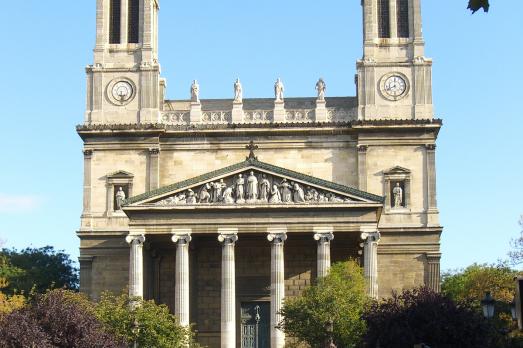
Paris, FR
The first stone was laid in 1824. The realization was entrusted to Jean-Baptiste Lepère and taken over in 1831 by his genus Jean-Ignace Hittorf. The work was slowed down by the Revolution of 1830 but the church was finally consecrated in 1844. The Chapel of the Virgin Mary was built between 1869 and 1870. It was Napoleon III who offered the sculpture of the Virgin Mary made by Carrier-Belleuse.

Châtillon-sur-Seine, FR
Because of its location above a high plateau, the church literally dominates the city. Here stood the important fortified castle of the Dukes of Burgundy and the bishops of Langres, of which only a few sections of the walls remain. A church preserving the relics of Saint-Vorles existed there since the 9th century. The collegiate church built at the beginning of the 11th century by the bishop of Langres is one of the oldest Romanesque buildings in Burgundy. The Lombard bands that decorate the exterior of the church are characteristic of the so-called Lombard art, found in the contemporary churches of Saint-Philibert de Tournus and Saint-Bénigne de Dijon, but which is rare in this northern part of Burgundy. A rather Ottonian or Carolingian influence can be noticed in the westbau of the church, which is a real two-storey western transept crowned by a bell tower, reminiscent of the great Rhine churches.
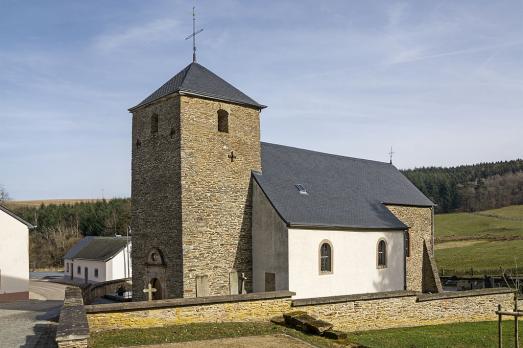
Rindschleiden, LU
The present nave of the church was built in the 16th century as a hall church. The fresco paintings date back to the corresponding building periods. The three-sided apse dates from the 18th century. The three-sided apse dates from the 18th century, as does the entrance portal, which bears the date 1750. They were rediscovered in 1952 during extensive restoration work.
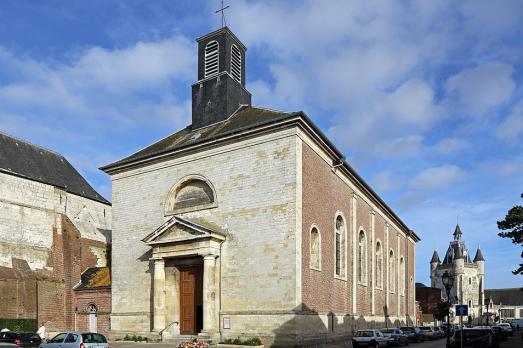
Rue, FR
The Church of Saint-Wulphy de Rue dates back to the early 7th century. It was dedicated to Saint-Wulphy, one of Rue's first priests. Pilgrimages around a crucifix washed up in 1101 led to the church being enlarged and embellished.

La Roche-Maurice, FR
The present church, dedicated to St. Yves (patron saint of judges and lawyers) was built during the 16th and 17th centuries, on the site of the former castral chapel dating from the Middle Ages. Despite the extraordinary finesse of the sculptures of the south portal or the double-gallery bell tower, considered to be one of the most beautiful in Leon, it is inside the church that the wonder reaches its peak: starting with the polychrome oak rood screen with its grotesque figures, the sandpits mixing religious and secular scenes, or the large stained glass window of the Passion made in 1539 (2nd largest stained glass window in Brittany with 21.05 m²). The Renaissance stained-glass window bears witness to the Flemish influence in Breton art (in the 16th century, Brittany occupied a prominent place in the trade between the Netherlands and Spain).

new
Nestled amidst the serene landscapes of the Harz region, lies a hidden gem for nature enthusiasts and history buffs alike - the Harz Monastery Hiking Trail. Lace up your hiking boots and embark on this captivating adventure that will transport you back in time.

The Holy Mile (Miglio Sacro) of Naples is a one-mile-long itinerary, through sacred places linked to the city's patron saint, San Gennaro, in the Rione Sanità district. Discover the city from a new perspective with this unique walking tour.

As a university city, cultural offerings abound in Tartu and will reach their peak after being designated one of three European Capitals of Culture for 2024. In this list, we've compiled the most interesting sacred places to visit in and around the old town.